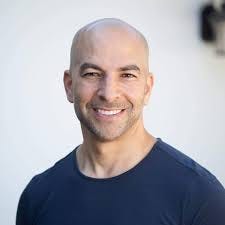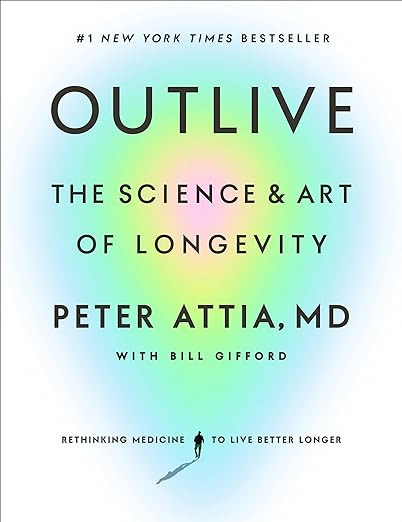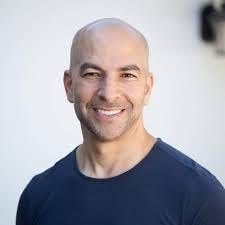Dr. Peter Attia on the 3 levers of diet (#62)
Whether you want to lose weight, or get healthier, you'll need to use one or all of these three forms of restriction
Here’s the good news: there are plenty of diets to choose from.
But while this gives you optionality, it can also be confusing. It causes many to bounce around in search of the perfect program, or get overwhelmed with the Paradox of Choice.
In his book, Outlive: The Science and Art of Longevity, Dr. Peter Attia attempts to simplify the situation. And with one of the most elegant frames around the idea of dieting that I’ve ever heard, Dr. Attia renders very similar the dozens of diets out there.
That diet frame—the three levers of restriction—is the subject of today’s OGT.
The Three Levers of Diet
This is the common goal of most “diets”—to help us break free of the powerful gravitational pull of the SAD (Standard American Diet) so that we can eat less, and hopefully eat better. But eating less is the primary aim.
Once you strip away the labels and the ideology, almost all diets rely on at least one of the following three strategies to accomplish this:
(1) CALORIC RESTRICTION, or CR: eating less in total, but without attention to what is being eaten or when it’s being eaten
(2) DIETARY RESTRICTION, or DR: eating less of some particular element(s) within the diet (e.g., meat, sugar, fats)
(3) TIME RESTRICTION, or TR: restricting eating to certain times, up to and including multiday fasting
In other words, if you are overnourished, and statistically speaking about two-thirds of us are, you will need to apply at least one of these methods of caloric reduction: deliberately tracking (and reducing) what you eat; cutting out certain foods; and/or giving yourself less time in which to eat.
…Breaking down our approach to nutrition to these three strategies allows us to speak about dietary interventions more objectively, instead of relying on labels such as “low-fat” or “Mediterranean” that don’t tell us very much. If we modify none of these variables—eating whatever we want, whenever we want, in as great a quantity as we want—we end up right back at the SAD.
Out of the three, caloric restriction is probably the best-researched route.
The problem is, it might also be the hardest. It’s not easy to eat less calories than you burn, in part because your body physically fights against this, and in part because your mind does.
From the standpoint of pure efficacy, CR or caloric restriction is the winner, hands down. This is how bodybuilders shed weight while holding on to muscle mass, and it also allows the most flexibility with food choices. The catch is that you have to do it perfectly—tracking every single thing you eat, and not succumbing to the urge to cheat or snack—or it doesn’t work. Many people have a hard time sticking with it.
The most frequently used tactic is what Attia calls, “dietary restriction”— cutting yourself off from one or several categories of food, while focusing on others. Keto diets are high in fat, Paleos eat no grains, vegetarians cut out meat, etc.
The upside of this might be simplicity—you know what you can’t eat. The downside, however, is that you won’t actually lose weight unless you use it to restrict calories (rather than intentionally counting and restricting them), which is the problem that most run into, if not at the beginning, surely by the end of a year or so.
DR or dietary restriction is probably the most common strategy employed for reducing energy intake.
It is conceptually simple: pick a type of food, and then don’t eat that food. It only works, obviously, if that food is both plentiful and significant enough that eliminating it will create a caloric deficit.
Saying you’re going on the “no lettuce” diet is pretty much doomed to fail. And you can still overeat while adhering perfectly to a particular DR, as I found out when I attempted to go vegan.
The problem with DR is that people assume just “eating healthy” or on diet absolves them from limiting caloric intake. It does not.
A major risk with DR is that you can still easily end up overnourished if you are not deliberate about it. People tend to (erroneously) assume you can’t eat too much if you’re just restricting fill-in-the-blank (e.g., carbohydrates). This is incorrect.
If you cut out carbohydrates altogether but overdo it on the Wagyu steaks and bacon, you will fairly easily find yourself in a state of caloric excess.
The final one is time restriction—the various forms of fasting.
This is what people are doing when they don’t eat breakfast, or they don’t for Lent or Yom Kippur. Fasting is simple, and after you get used to it, for the right sort of person, it can be surprisingly easy to follow. (I wrote about my intermittent fasting experiment here, and my time at a water fasting retreat here).
TR or time restriction—also known as intermittent fasting—is the latest trend in ways to cut calories.
In some ways I think it’s the easiest. When I was a cyclist, and I was trying to drop that six final pounds from my already very light (for me) frame, this became my jam. I would allow myself only one meal per day, despite doing about three hours per day of training.
But this can still backfire if you overeat. I have, much to my amusement, watched patients gain weight on a one-meal-a-day approach by turning their meal into a contest to see who could eat the most pizza and ice cream.1
The thing that Dr. Attia continues to hammer home, however, is that no matter what diet you chose, and which combination of the above levers it implements, you’re still going to have to be in a caloric deficit to lose weight.
I may be starting to sound like a broken record, but it should be obvious by now that many of the problems we want to address or avoid stem from consuming calories in excess of what we can use or safely store. If we take in more energy than we require, the surplus ends up in our adipose tissue2, one way or another. If this imbalance continues, we exceed the capacity of our “safe” subcutaneous fat tissue.
He concludes with sobering advice, telling us wisely to pick something we can stick to, rather than the “best” diet.
The key is to pick a strategy to which you can adhere but that also helps achieve your goals. This takes patience, some willpower, and a willingness to experiment.
The OGT: What lever do you want to pull?
Sometimes I find Dr. Attia making too many, what I would call “edge” or “contrarian” arguments about diet— things not agreed upon by the consensus science.3 But, he also provides gems like these three levers, which I why I bought his book.
Personally, I use all three levers in different ways. I eat a plant-based diet (dietary restriction), I tend to keep that in a window between 10:30-6:30 (time restriction) and mostly eat less calories than I burn (caloric restriction).
What levers do you pull?
Dr. Attia adds that protein deficiency and muscle loss can result from TR.
Fat
For instance, he’s big on eating 1 gram of protein per pound of body weight, but even the most favorable meta analysis to protein, shows how there is little effect after 1.6 grams per kilogram of body weight, and that much of it can be had at 1.2 grams of protein per kg.





